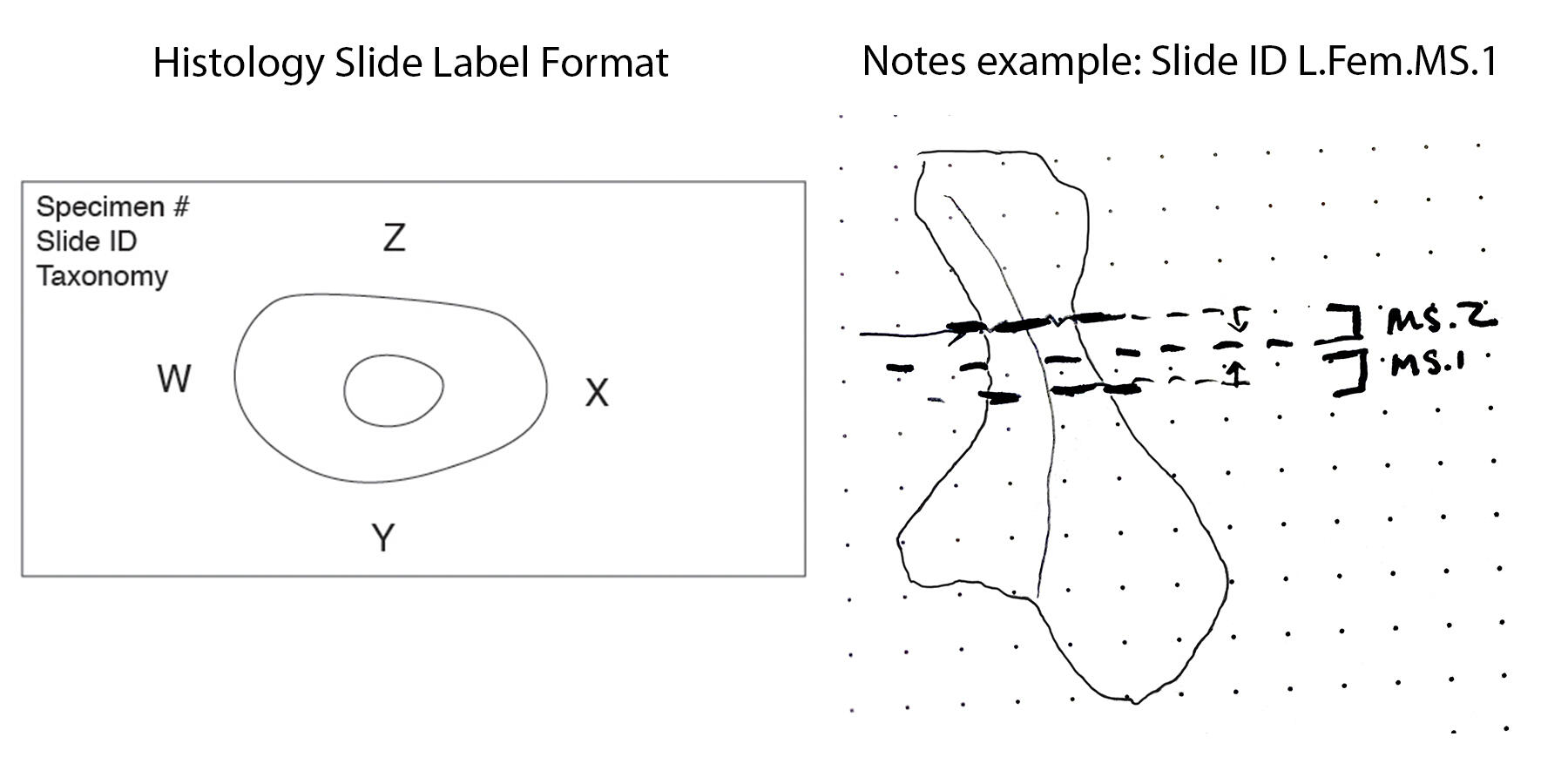Loans are made for research and exhibit purposes only. If you wish to request a specimen loan for the purpose of exhibition, please review the MCZ Exhibit Loan Policies and contact MCZ Collections Operations at mcz_collections_operations@oeb.harvard.edu.
For research loan requests, please review the Loan Guidelines listed below before submitting your request. Failure to comply with any or all of the guidelines may impact copyright requests and/or future loan requests by the borrower, their lab, or the institution more generally.
Short duration loans may be made with the approval of the curatorial staff and may be recalled as necessary. To request a specimen loan, please complete the MCZ Vertebrate Paleontology Specimen Loan Request form and send it to the Curatorial Associate at mcz_vertebratepaleo@fas.harvard.edu.
For proposals that include the creation of 3D data, including but not limited to CT scanning, laser scanning, and photogrammetry, please review the 3D Data Collection and Use Policy for MCZ Vertebrate Paleontology Specimens. The MCZ VP Department prefers all scanning be completed at Harvard in order to preserve specimen integrity and to limit specimen inaccessibility. CT scanning may be performed by both internal and external researchers at Harvard’s Center for Nanoscale Systems. For more information visit the Center for Nanoscale Systems website. In exceptional cases, loans may be approved for scanning at non-Harvard facilities. The rationale for using an external scanning facility needs to be included in the project proposal.
If a loan request that involves 3D imaging is approved, all researchers named in the project proposal will be required to sign the 3D Data Collection and Use Policy form. The primary researcher will then need to sign the MCZ Vertebrate Paleontology 3D Data Use Agreement on behalf of all collaborators.
For proposals that include destructive sampling, please review the MCZ Destructive Sampling Policy and the Vertebrate Paleontology Destructive Sampling Policy, which can be found in the Destructive Sampling tab on this webpage. The Vertebrate Paleontology Destructive Sampling Policy contains specific instructions related to loaning, sampling, and returning sampled VP specimens.
Upon approval of the loan request, a formal loan receipt form will be produced. The borrower is required to sign and return a copy of the loan receipt form upon receiving the specimen(s). Any damage during shipping must be indicated on the loan receipt form and the Curatorial Associate notified immediately for instructions on specimen handling (see Loan Guideline on Specimen Care and Handling). Failure to return the signed form may jeopardize publication copyright or any future loan requests.
Loan Guidelines
Institutional Affiliation: The borrower must be affiliated with a research institution. Individuals without such affiliation may borrow specimens only under the condition that they are sponsored by an individual with such an affiliation and agree to study the material at the sponsor's institution. In such cases, loans will be sent to the sponsor at the sponsor's institutional address. The loaned material may not leave the sponsor institution without prior approval from the Curatorial Associate.
Students and Faculty Sponsors: Student borrowers must have a faculty advisor who is willing to oversee the care and safe return of the loaned specimens. All requests must be accompanied by the full name of both the student and advisor and the advisor’s institutional address so appropriate inquiries may be made.
Types and Specimen Stability: In most cases, loan requests for type material or other historically important specimens will not be granted, unless deemed appropriate by curatorial staff. If the specimen requested is deemed to be in fragile condition, transportation by hand may be required or the researcher may be required to visit the collection to examine the requested material in person.
Size of Loan Request: Researchers are requested to consider the practicalities involved in responding to requests for large numbers of specimens, or material that is large and/or heavy. In these cases, a researcher may be required to visit the MCZ. Requests that involve many specimens from the same taxon may need to be sent in multiple lots, such that the collection is not depleted.
Loan Tenure: Specimens are loaned for a period of 6 months. It is the responsibility of the borrower to contact the Curatorial Associate in writing to request an extension. A request for an extension must be made before the current loan period expires.
Care of Specimens: The borrower assumes responsibility for the care of the specimen(s). All borrowed specimens are to be kept in a secure facility and in association with their labels and other accompanying data. If the loan institution is not known to the MCZ curatorial staff, details of where and how the specimen will be stored while on loan may be requested before a decision is made. Improper care of specimens while on loan (e.g., unreported or excessive damage, unauthorized alteration or preparation) could impact future loan requests by the borrower, their lab, or the institution more generally. If the researcher needs to collect data or image a specimen at an institution outside of the borrower’s institution, the name and location of the facility must be reviewed and approved by curatorial staff in advance. If research on the specimen needs to occur in a country other than the borrower’s institution, this must be disclosed with the loan request as permits and permissions need to be sent with the loan to adhere to international laws for the transport of fossilized specimens.
Researchers are not permitted to undertake preparation of MCZ specimens without the approval of the Curatorial Associate. If a researcher needs a loaned specimen to be prepared, the Curatorial Associate must be contacted with the request before any alteration to the specimen occurs. In the request, include rationale for the preparation, a description of the borrower institution’s facilities, and the preparator’s name and e-mail address. The Curatorial Staff may need to contact the preparator to discuss the work to be performed. Specimens may not be electrocoated for SEM examination without prior approval from curatorial staff.
If a specimen breaks or is damaged while on loan, do NOT attempt to repair the specimen. Please contact the Curatorial Associate for direction on how to handle the specimen. Send clear photos from multiple angles, including a scale bar, of the damage, describe the damage-causing incident, and information regarding the institution’s on-staff paleontology preparator. Please include the preparator’s name and e-mail address. The Curatorial Staff may need to contact the preparator to discuss the work to be performed.
Molding and Casting: Since the process of molding a specimen has the potential to damage a specimen, the VP molding and casting policy follows similar key points as the destructive sampling policy. Written approval must be obtained from the curator before molding and casting of a specimen may be performed. Requests for molding and casting must include pertinent qualifications of the investigators (including prior experience with this process) and the methodology to be used (including chemicals and equipment). For molding and casting requests to be approved, the researcher, the researcher’s institution, and/or the student researcher’s advisor must have demonstrated previous abilities to perform the molding and casting method proposed.
If permission is granted, the mold and first cast (also called the master) should be returned to the VP department. Please ensure that the cast is complete, does not have excessive small bubbles within the cast that obscure surface features, and does not exclude small structures due to air bubbles trapped in the mold during casting. A list of all materials used on the specimen and methodology should be documented and included with return of the loan to ensure proper conservation care of the specimen.
Hand Carrying Specimens: If a specimen requires transportation by hand (‘hand-carry’), the borrower of the loan must demonstrate they have the appropriate funds to return the loan in the allotted loan period.
Shipping & Insurance: The MCZ will pay for shipping and insurance on the loan to the borrower(s) institution, while the borrower(s) assume responsibility for the safe and insured return of the loaned specimens.
Packing & Returning Specimens: Borrowers are requested to return all specimens as soon as possible upon completion of their research. Partial returns are acceptable until all specimens in the original loan have been returned. A copy of the original loan form should be enclosed with the returned loan. All specimens should be sent via FedEx. Specimens should be securely packed and boxed. Specimens with loose elements should especially be protected.
Due to the increased volume of mail sent during the holiday season and the increased risk of shipping complications, please do not return loans during the month of December. Please notify the Curatorial Associate when the return loan has been shipped and provide any tracking numbers associated with the package(s).
Please mail specimens via FedEx to:
Christina Byrd
Museum of Comparative Zoology, Vertebrate Paleontology
Harvard University
52 Oxford Street
Room B341
Cambridge, MA 02138
Change of Address: Loans may not be moved between institutions without prior permission. It is the responsibility of the borrower to notify the MCZ curatorial staff prior to any change of address so the appropriate records can be updated.
Designating New Type Specimens and/or Identifications: Researchers designating types from MCZ material are requested to provide the curatorial staff with a copy of the published type designation. It is requested that type specimens be returned either via Fed-Ex or hand-carry. Researchers designating new identifications of MCZ material are requested to notify curatorial staff and provide a copy of the document to the Curatorial Associate.
Loan Transfers: Transfers may not be undertaken without the written permission of the curatorial staff.
Copyright and Publications: Credit for any use of MCZ material should be given in resulting publications. Publications should include a table that lists MCZ specimen numbers and reprints should be sent to the Department of Vertebrate Paleontology. Permission for 2D- or 3D-imaging of loaned specimens must be specifically requested in the loan request. Please review the MCZ Permissions & Copyright Policy for more information. Copies of all media must be sent to the Vertebrate Paleontology department. Please read the Guidelines for Digital Media provided to the MCZ.


